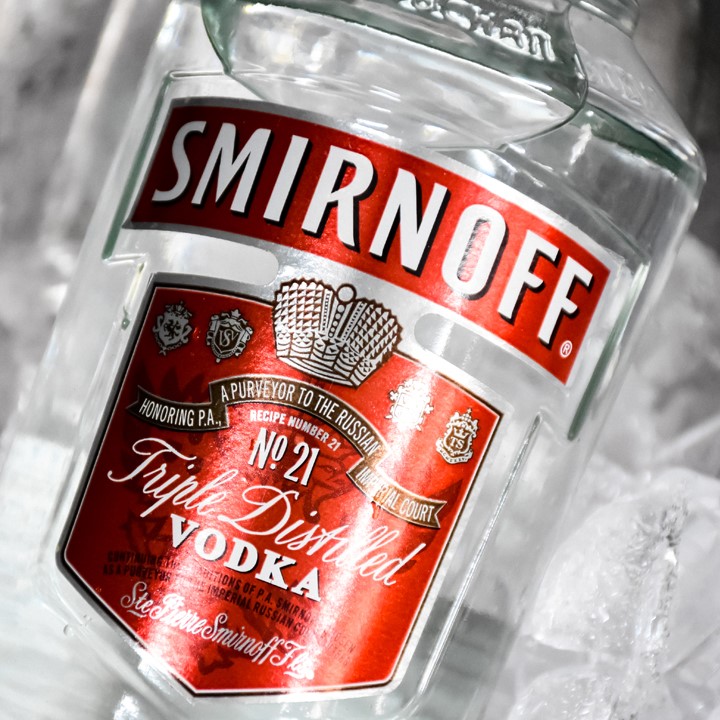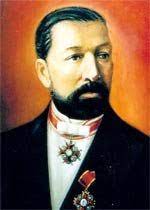Twice escaped execution, fled his country, became vodka king: Pyotr Smirnoff
What storms are hidden in people's life stories. When Pyotr Smirnoff produced vodka, the national drink of the Russians, in a clearer, odorless and neutral form than the others, with his own method, he even got the right to draw the state emblem next to his brand.

It was even declared an "Imperial supplier" by the tsar. However, neither the Tsar nor the palace remained during the Bolshevik Revolution. Smirnoff also found himself in the dungeon. He was seated in front of the firing squad twice, but luckily, he came back from the dead each time.
He was saved by the raid of the White Army when he was about to be shot in the last one! Runaway Smirnoff. To where? To Istanbul, as many Russians did at that time!.. He tried to produce his vodka to sell in the taverns around Galata, but it didn't work. After 4 years of Istanbul adventure, he threw himself to Europe. It started production in France and became very popular. But again, the war years!
This time, Smirnoff's eyes were on the USA. He went to America and produced his vodka, but the Americans only drank whiskey and never gave up on vodka. Just as he was about to sink, he had a brilliant idea: to market vodka as white whiskey and use it in cocktails. Thus, a glass of olive Martini or Blody Mary was placed in the hands of Hollywood stars. Vodka has become the main drink of cocktails with its non-dominant spirits quality.
The secret of Smirnoff, which is the most preferred vodka brand in the world today, is distillation from charcoal in a ten-stage process and it takes at least eight hours!
Details
It all starts in Russia in 1864. Piotr Arseneevich Smirnov, who has been working in his uncle's wine cellar since the age of 7, decided to establish a distillery in Moscow at the age of 33 and produce his own brand of vodka. It produces the 'purest' vodka in a short time, outperforming its competitors. The secret is to use 5 times more beech wood coal in the distillery compared to the ones made until that day.
And his vodka-making style still stands today in the 'St. It is called and used as the "Petersburg method". After all, Piotr is famous for his formula, which he calls the number 21. This special vodka, with the words 'PA Smirnov' written on the bottles, soon became the official drink of the Tsarist Palace of Russia.
OPENING TO THE FIRST WORLD
PA Smirnov is starting to be sold in Far Eastern cities such as Beijing, Harbin and Shanghai.
The producers of this vodka, which returned with awards, first in Vienna in 1873, Philadelphia in 1876, then Paris, Barcelona, Milan and Stockholm, received the Spanish Isabella Medal in 1888 and the King of Sweden and Norway II. They are gaining the title of being the supplier of Oscar.
In Russia, they are allowed to use the heraldic coat of arms of Russia on their bottles and labels, becoming the official supplier of the empire.
However, this rapid rise is reversed for a while with the changing balances of the world.
RETURNED FROM EXECUTIONS
With the Bolshevik Revolution, aka the October Revolution, that took place in Russia in 1917, the state confiscated all private vodka production; Factories close, production stops. Declared "a bourgeois enemy of the people" by the Bolsheviks at that time, Vladimir engaged in armed conflicts, took part in uprisings, was imprisoned and sentenced to death. It spins from the ends of the barrels many times; his execution by firing squad is often delayed 'at the last moment'.
And finally, freed and escaping from Russia, Vladimir took refuge in Istanbul in 1920.
IN ISTANBUL GALATA
Deciding to do what he knows best in Istanbul, Vladimir begins to produce his vodka in this city, according to many sources. But somehow he doesn't succeed.
Vladimir, who has been living in Galata, Istanbul for 4 years, cannot apply the sales and marketing he wants here, so he first goes to Poland; After a short while, he goes to France from there.
In 1925, 'Smirnov' became 'Smirnoff' under the influence of the French, and the number 21 vodka formula spread all over the world from Paris.
'VODKA IS WHITE WHISKEY'
Having achieved a significant success in Europe, Vladimir decides to try his luck in the USA. But Vladimir's move backfires; because Americans drink whiskey! That's where a marketing genius, John Martin, steps in and comes up with the legendary slogan that sold vodka in the USA:
'Vodka is white whiskey'.
And after this move, it is emphasized that the 'colorless and odorless' drink can be 'mixed with many other drinks'.
COCKTAIL REVOLUTION!
John Martin, so to speak, 'explodes' 'vodka' with the cocktail he invented and named Moscow Mule! So much so that the 'Cocktail Revolution' is spreading all over the world, starting in the USA, with the discovery by consumers that Smirnoff can be mixed with almost anything.
After the 'Moscow Mule', world-famous cocktails such as Bloody Mary, Vodka Martini and Screwdriver were found, and Smirnoff's sales figures exploded in the early 50s.
By the way, Smirnoff is sold in 150 countries, but it is no longer produced in Russia, its birthplace!
The secret of colorless and odorless: Charcoal filter
High-quality grains are the main raw material of Smirnoff vodka. These grains, the weight of which is wheat, are mixed with soft and low-iron natural water, which is the greatest need of good vodka, and converted into a sweet liquid and fermented by adding yeast.
The low alcohol beer obtained as a result of fermentation is distilled 3 times to increase the alcohol level; It is purified by removing all tastes, colors and odors. After this stage, the processes that make Smirnoff pure and special come into play.
This process is '10 times' coal filtration.
The prepared vodka is filtered drop by drop through columns containing pieces of charcoal, obtained from the 'silver birch' trees grown in a certain region in Poland. The journey of one drop takes a total of 80 hours in 10 columns.
Coal has turned vodka into a colorless and odorless drink over the centuries, just as our ancestors washed and cleaned the laundry with ash.

